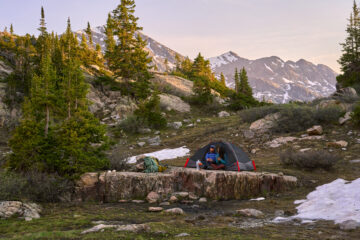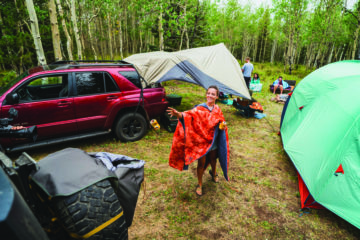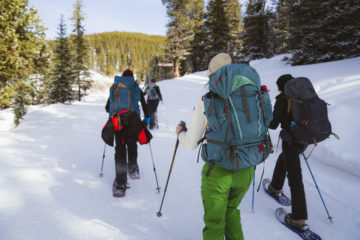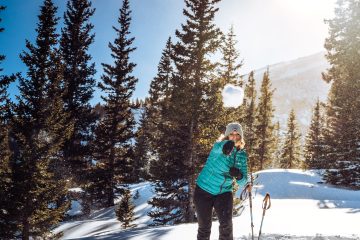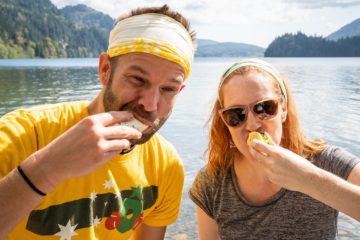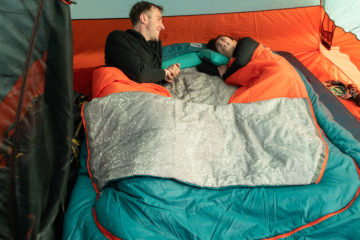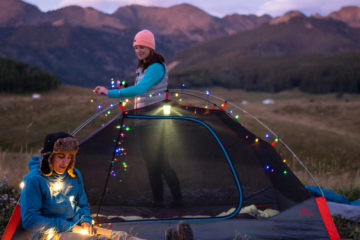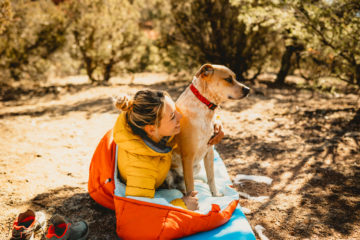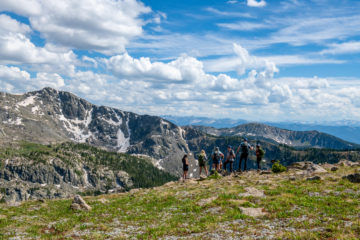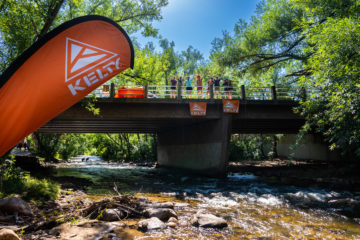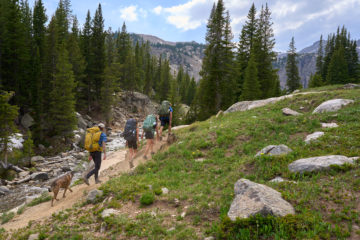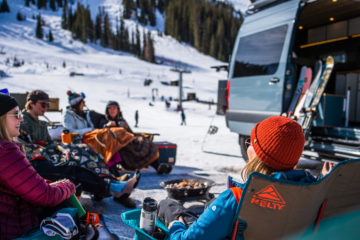There are reasons everybody wants to go camping in the late spring and early summer, and none of them are wrong—the days are long, the weather’s nice, and *some* schedules are looser. Which is all cool, until you’re trying to share the “solitude” of nature with 1,000 other happy campers.
It can feel like doggone Manhattan out there, which is exactly why you should get out during shoulder season instead. We’ve rounded up our best shoulder season backpacking tips—including where to go, what to bring…and how to stay cozy during those cold nights.
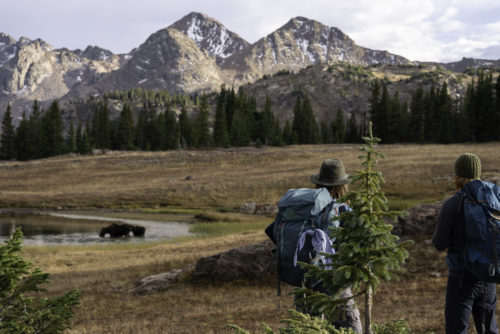
WHEN
If you read the title of this post and wondered “when is shoulder season?” you’re probably not alone. This is the travel industry’s term for those times between high season and low season. While there are no hard dates attached (because, hemispheres and stuff), for backpacking in North America, we’re generally looking at the spring and fall months. Here in Colorado, we generally tend to prefer fall backpacking because spring can involve snowy/wet/muddy terrain.
WHY
Shoulder season backpacking is really all about compromise—you’re basically trading the promise of near-perfect weather for the appeal of emptier trails and easier reservations. For those who don’t mind getting a little cold and/or wet, fall backpacking is kind of a no-brainer.
WHERE
Your ideal shoulder season destinations for blissful fall backpacking will be determined by a bunch of different factors—including your desired terrain, approximate drive-time and the basic skill levels of you and your crew. In general, though, you should always (1) Make sure the park is open to backpackers (2) CHECK THE WEATHER before you leave, and (3) Check for any safety or travel restrictions for the park, county and state.
For bonus points, check out this map to find out where the fall foliage will be going off, and choose fall backpacking trails with lots of geological or arboreal shelter that can protect your tent from cold winds and other weather. Here are five we’ve found to be relatively reliable:
TETON CREST TRAIL / Grand Teton National Park, Wyoming
Backcountry permits are required for this 39-mile trek, which is best done from north to south with a car shuttle. You’ll see most of the park and some truly stunning fall colors.
TIMBERLINE TRAIL / Mount Hood National Forest, Oregon
This breathtaking 41-mile hike serves up a steady diet of snow-capped volcano views, mist-shrouded forests, waterfalls and magic—seriously, why are you not there yet?
BEAR WALLOW > LAKE PEAK / Hyde Memorial State Park, New Mexico
If you only have a couple of days, this steep 16-mile loop (heeeyyyy, nearly 5,000 feet of elevation gain) is a great way to maximize your time away and snag some killer views.
TONTO TRAIL / Grand Canyon National Park, Arizona
The 29-mile section from Grandview to South Kaibab gets tons of sun exposure, so it’s doable well into November—with dry ground, empty trails and lots of grand geology.
EMERALD + SAPPHIRE LAKES LOOP / Trinity Alps Wilderness, California
Yes, we DID say to avoid bodies of water—but only when making camp! The rest of this intermediate loop has plenty of shelter, and you’ll ditch the bugs that plague summer hikers.

WHAT
Shoulder season backpacking makes having the right gear more important than ever. Start with a tent that’s both lightweight and substantial, and offers ventilation to help you avoid excess condensation. Next, grab a pack that fits your warmer layers, but don’t shoulder (see what we did there?) too much weight. Our Asher Packs are so comfortable, you’ll never have to leave that extra layer or extra bag of GORP at home.
You’ll want an ultra-warm sleeping bag to snuggle up in at night (natch), and our Cosmic Ultra Bags definitely fit the bill. Not going on a giant trek? Our Galactic Down Blanket is the perfect cool weather accessory to throw in the pack to stay warm while at camp! And no fall backpacking trip is complete without the added security of our Trekking Poles, for a safe and surefooted step, regardless of the terrain.
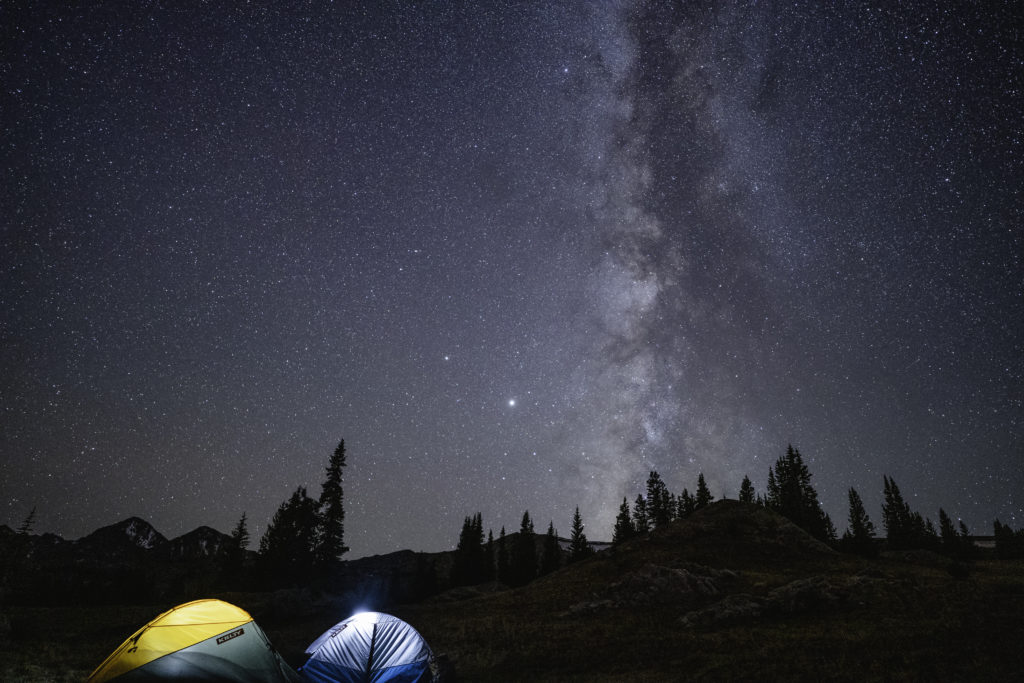
WEAR
This should go without saying, but smart clothing might be the most important element of your cold-weather backpacking gear. Fall weather can be dicey AF, so you’ll need to significantly up your layering game. Start with wool, fleece or synthetic base layers that will wick moisture and retain heat, even when wet. Long underwear is a must, and you’ll also want gloves and a beanie, extra socks and possibly even down booties for nighttime.
With regard to outerwear for fall backpacking trips—addition to a versatile puffer, consider bringing rain shells for both top and bottom. And finally, fall means game season! If you plan to be hiking through active hunting areas, make sure everyone in your group, especially the doggos, has at least one piece of high-vis clothing in the mix.
A final word, from those who know: when it comes to preparing your food for fall backpacking trips, KEEP IT DRY AND KEEP IT SIMPLE. When you stop hiking to make camp in colder weather, your core temperature can drop quickly—and it’s great if all you have to do is boil water and enjoy! Bring high-carb, good-fat snacks like granola bars, and dress up extras like powdered cocoa mix with add-ins like collagen that will help keep you fuller, longer. Always bring more food than you think you need, along with a water filter or tablets…and be sure to figure out exactly where your wilderness water sources will be.
For more Built for Play fun, follow @keltyusa on Facebook & Instagram.
Photos: Tom Milam, @twm_photo
